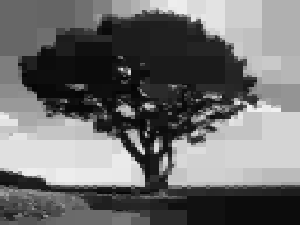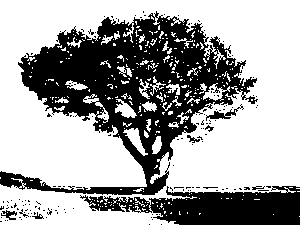Six Alternatives to Squinting Really Hard
A Comparison of Image Segmentation Algorithms



Project Overview
Image segmentation is the task of labeling the pixels of an image into groups that are representative of some sort of coherent elements of the image. It is a complex task, and many algorithms exist to accomplish it, with varying degrees of success. We explore six alternatives to solving this problem and discuss their relative strengths and weaknesses, evaluating both by qualitative comparisons to ground truth images and by two different evaluation metrics.
Thresholding Algorithm
Thresholding is a simple image segmentation algorithm that segments based on whether a pixel is above or below a certain value.
Region Growing Algorithm
Region Growing is an image segmentation algorithm that starts with one seed and segments the whole image using a threshold until all the pixels are divided into one of two regions.
Split and Merge Algorithm
This two part recursive algorithm works by first dividing the image into quadrants that represent homogenous pixel values, and then merging any quadrants that are also homogenous to create continuous segments.
K-means Algorithm
This clustering algorithm iteratively assigns pixel to their nearest cluster center, then updates those centers based on the cluster averages.
Watershed Algorithm
This unique algorithm treats images as landscapes of pixels, with lighter pixels higher and darker pixels lower. It floods these landscapes, treating the pools that form as different segments.
Minimum Cut Algorithm
The minimum cut algorithm segments an image by converting it into a graph and finding a minimum cut in that graph that partitions the pixels into two segments, based on the similarity of pixels’ colors and closeness in distance.
Copyright 2019, Vision Design - graphic zoo